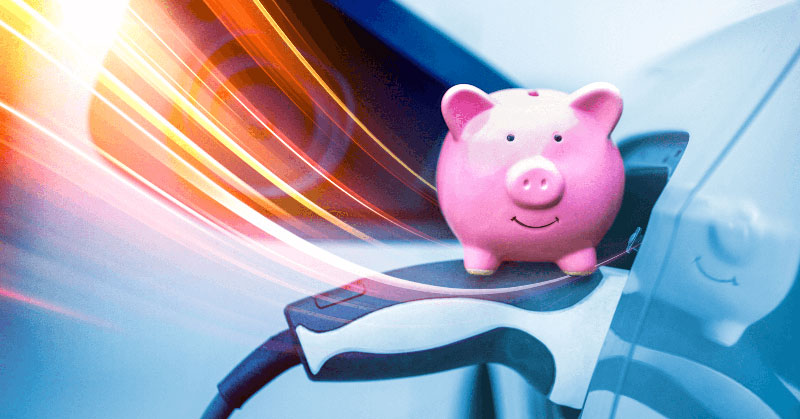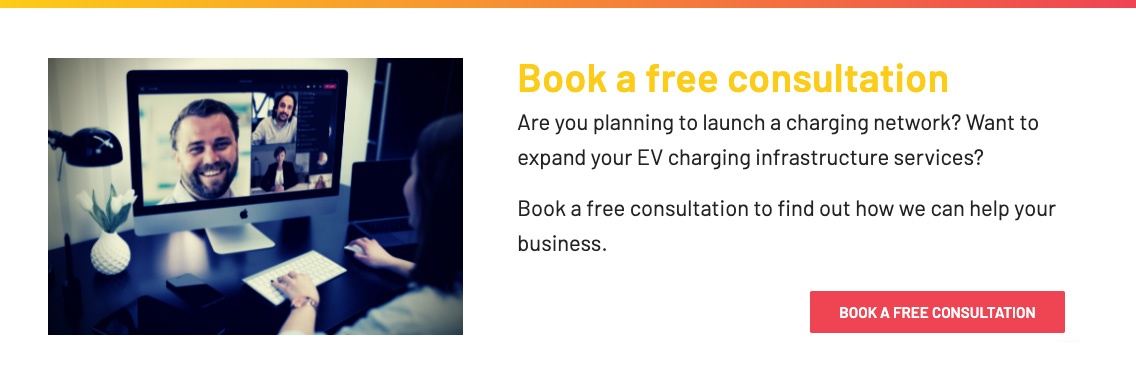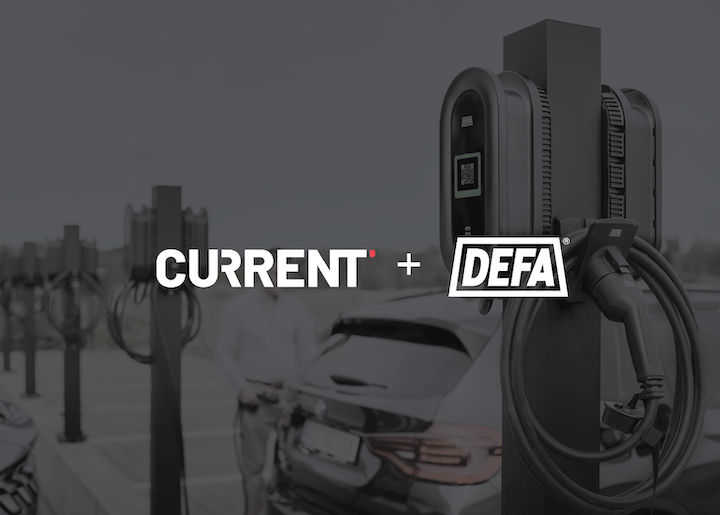
You might be wondering how you can reduce the total cost of ownership and operations when offering charge points to your customers. Whether you want to maximize profits, monitor energy usage, or simply manage multiple vehicles plugging in at once, energy management is the key to keeping on top of costs.
What is smart energy management?
When it comes to charging, smart energy management is about controlling the amount of power that goes to each charger. In order to avoid overloading a site or to simply control peak charging, this allows you to reduce costs and the amount of energy you use. This helps to save on energy bills but can also be used to make the most of renewable sources of energy.
How does energy management work?
The CURRENT SmartCharge platform communicates with each charge point through the Open Charge Point Protocol (OCPP). This means the software isn’t tied to one particular manufacturer and can be flexibly used even if you already have chargers installed on-site. The chargers need to be OCPP compliant as this allows us to control the charger and, therefore, the energy use.
We aggregate the chargers by location, which might have multiple circuits and different amperage limits. We separate these layers into one location that has specific boundary conditions. From this, we’ll be able to understand more about the kind of power being drawn, the total amperage that could be drawn from the main circuit, and more. This information helps us to set the conditions for energy management in order not to overload the site.
For example, a hotel might have five chargers on site. Knowing how much the entire site can use, regularly uses, and what’s available to each charger creates a baseline. From this, energy use can be controlled to manage cost, better distribute energy, and ensure the right areas have enough power when needed.
While saving money is a huge part of this, there are some other useful things that can be done with this system. For example, if all chargers are occupied, you might want to give preference to VIPs or special vehicles such as ambulances. This means those vehicles will charge more quickly than others, or skip ahead to the front of the queue.
It’s down to the location manager or charge point owner to set these parameters based on end-user behavior, meaning your chargers and energy use are totally within your control.
Flexible services
With the right technology in both chargers and vehicles, these tools become even more powerful. The latest generation of EVs are able to share their state of charge and with this information, the SmartCharge platform has even more configurability.
For example, we can prioritize a car that has just 20% charge over a car that is already on 78%. Similarly, we could decrease the power going to any cars with a state of charge above 80% — as the battery management system within the car automatically slows down a charge for the last 20%. Users and location managers still have the opportunity to say it’s an emergency and they need 100% as quick as possible, but these tools open up so many options for how we use energy.
Vehicle-to-Grid
In the future, there’s the opportunity to do ever more with this technology, too. Vehicle-to-Grid (V2G) allows a car to give back to the grid. This can protect against power surges, stabilize the grid, and make better use of renewable energy. This is something we’re exploring through our European projects but it has the potential to be rolled out across the world as the V2G technology becomes more readily available.
For example, if the windmills of Scotland are producing a lot of energy on a windy day, we could increase power to the chargers to make use of that surplus. Equally, on a calm, still day at peak hours, we could send some energy back from plugged-in cars to help stabilize the energy grid with some of the previously generated wind energy. This opens up a lot of interesting business models that both make money and help to decarbonize the grid.
Benefits
The biggest benefits of smart charging and energy management come down to cost. It can help in these ways:
- Reduce initial investment in hardware and local infrastructure
- Reduce operational costs
- Save on energy bills
- Reduce wider infrastructure costs (such as for electrical grid upgrades)
The average hotel or office block is theoretically using most of its power but the SmartCharge platform allows site operators to instantly see how much is being used. This enables you to see the delta between the actual maximum and what’s in use and then distribute that power accordingly. This means you could supply charging to customers or employees without increasing the intake of power, which could lead to significant cost reductions.
Installing chargers may require the need for additional energy supply, increased costs from the DNO, and/or infrastructure upgrades. With the SmartCharge platform, we can avoid a lot of these costs. For example, a car park or multi-unit dwelling with multiple levels of parking could avoid those extra costs by using smart energy management to create an energy peak and ensure usage doesn’t go over that level, no matter how many cars are plugged in.
We have one location that has more than 400 22kW chargers. Even in Norway where we use a lot of renewable energy, this could cause a lot of strain on the grid. Energy management allows us to balance out the energy consumed, especially during peak times.
The SmartCharge platform
CURRENT’s SmartCharge platform was designed to solve the challenges of businesses that want to offer charging. Because it does everything, there’s no need to work with multiple third parties as everything can be done from one piece of software from communicating with the charge points to starting a charge to managing energy use.
As the software works with any OCPP-compliant charger, it’s totally hardware agnostic and can be integrated with existing systems and brand-new installations alike. The flexibility provided by the platform allows you to, more or less, do whatever you want in the way that best serves the end-users while taking into account your energy needs.
If you’d like to see a demo of the SmartCharge platform and chat about how it might help your business, book a consultation.





